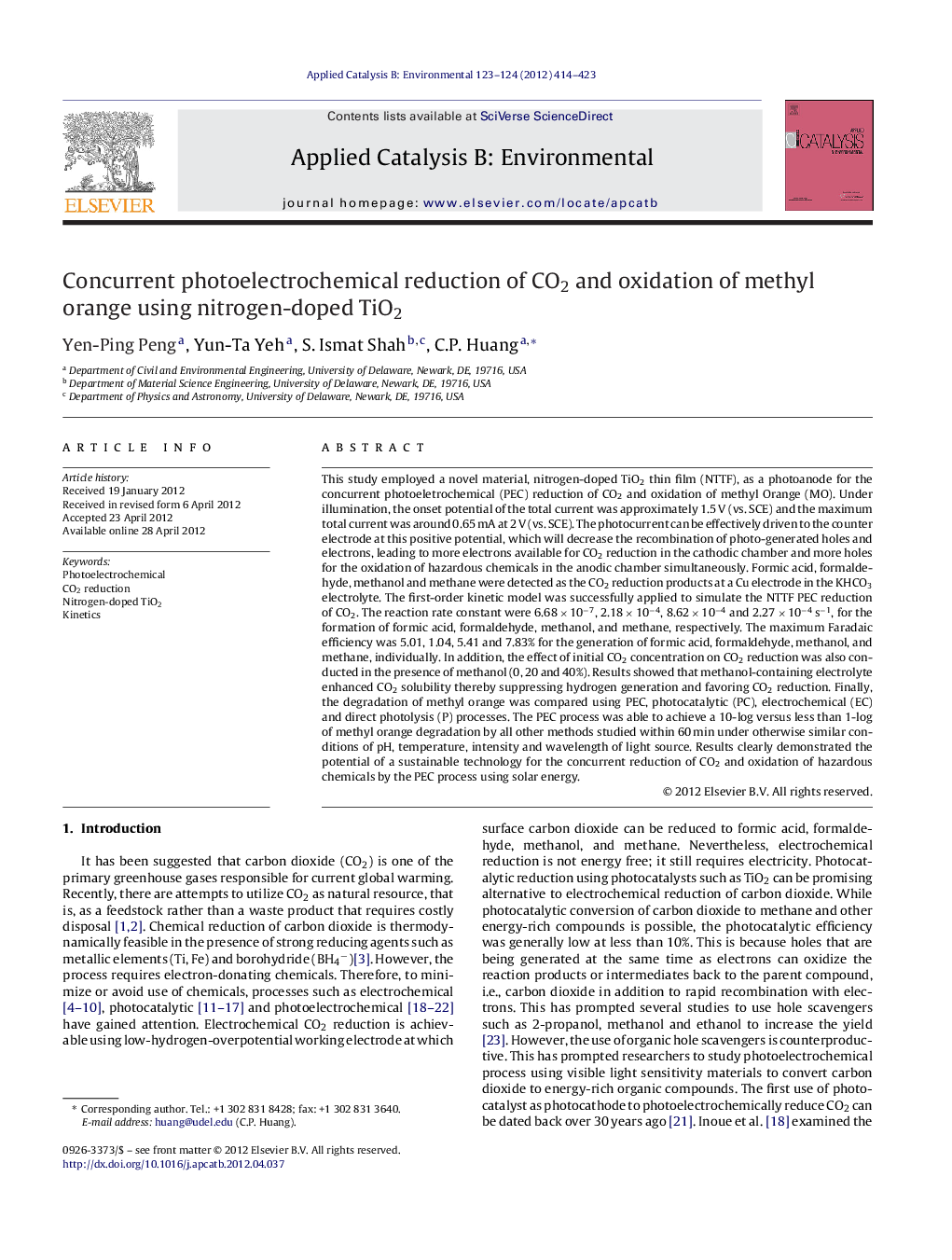| کد مقاله | کد نشریه | سال انتشار | مقاله انگلیسی | نسخه تمام متن |
|---|---|---|---|---|
| 46161 | 46430 | 2012 | 10 صفحه PDF | دانلود رایگان |

This study employed a novel material, nitrogen-doped TiO2 thin film (NTTF), as a photoanode for the concurrent photoeletrochemical (PEC) reduction of CO2 and oxidation of methyl Orange (MO). Under illumination, the onset potential of the total current was approximately 1.5 V (vs. SCE) and the maximum total current was around 0.65 mA at 2 V (vs. SCE). The photocurrent can be effectively driven to the counter electrode at this positive potential, which will decrease the recombination of photo-generated holes and electrons, leading to more electrons available for CO2 reduction in the cathodic chamber and more holes for the oxidation of hazardous chemicals in the anodic chamber simultaneously. Formic acid, formaldehyde, methanol and methane were detected as the CO2 reduction products at a Cu electrode in the KHCO3 electrolyte. The first-order kinetic model was successfully applied to simulate the NTTF PEC reduction of CO2. The reaction rate constant were 6.68 × 10−7, 2.18 × 10−4, 8.62 × 10−4 and 2.27 × 10−4 s−1, for the formation of formic acid, formaldehyde, methanol, and methane, respectively. The maximum Faradaic efficiency was 5.01, 1.04, 5.41 and 7.83% for the generation of formic acid, formaldehyde, methanol, and methane, individually. In addition, the effect of initial CO2 concentration on CO2 reduction was also conducted in the presence of methanol (0, 20 and 40%). Results showed that methanol-containing electrolyte enhanced CO2 solubility thereby suppressing hydrogen generation and favoring CO2 reduction. Finally, the degradation of methyl orange was compared using PEC, photocatalytic (PC), electrochemical (EC) and direct photolysis (P) processes. The PEC process was able to achieve a 10-log versus less than 1-log of methyl orange degradation by all other methods studied within 60 min under otherwise similar conditions of pH, temperature, intensity and wavelength of light source. Results clearly demonstrated the potential of a sustainable technology for the concurrent reduction of CO2 and oxidation of hazardous chemicals by the PEC process using solar energy.
Concurrent photoelectrochemical reduction of CO2 and oxidation of methyl orange using nitrogen-doped TiO2. Figure optionsDownload as PowerPoint slideHighlights▸ Nitrogen-doped TiO2 thin film (NTTF) was an effective photoanode. ▸ Bias potential isolating electrons from the photoanode enhanced redox reactions. ▸ Separating electrons from holes enhanced photocatalytic reaction efficiency. ▸ Methanol increased water solubility and photoelectrochemcial reduction of CO2. ▸ PEC improves the degradation of Methyl Orange drastically.
Journal: Applied Catalysis B: Environmental - Volumes 123–124, 23 July 2012, Pages 414–423